The beautiful flower, named after the princess of the Roman Empire, is distinguished by a variety of species and attractive flowering. In the gardens of central Russia, shrubby and standardized forms of culture are often cultivated. And care for hydrangea in the spring is the key to maintaining the health and decorativeness of the plant.
Material Content:
The nuances of spring planting hydrangea in the open ground
Planting hydrangea in spring in open ground is carried out in areas with a mild and temperate climate. In more northern regions, it is worth postponing planting work until the fall.

For planting any type or variety of hydrangea, sunny and open areas of the garden are selected.
It is important that there are no other tree species with a superficial root system nearby, which will lead to a struggle between plants for nutrients.
Hydrangea feels comfortable on neutral, slightly acidic soils with a loose structure and a fertile layer. The site is dug up in advance with the addition of brown peat, which acidifies the soil, and sand, which improves the drainage properties of the soil.
Landing is carried out according to the following scheme:
- A nutrient substrate is prepared from the arable layer of the extracted land, peat, compost, mineral fertilizers and sand.
- Pits with dimensions that are twice as large as the parameters of the earthen lump of the seedling are dug in the selected area.
- At the bottom there is a drainage layer of broken brick, graph or fine gravel.
- A little substrate is lowered into the recess, on which a seedling with a spread root system is placed.
- The pit is filled with the remaining soil mixture so that the root neck is slightly above the ground level.
- Soil in the near-stem circle is compacted, watered and mulched using sawdust or peat.
Hydrangea spring care
Caring for an unpretentious, but very beautiful plant in the spring is quite simple, carrying out only the most necessary manipulations.
Pruning a plant after winter
After winter, hydrangea needs pruning. It is necessary to start crop pruning after the plant has reached the age of three to four years. Spring pruning of hydrangea, which blooms on the shoots of the current year, is carried out before the sap flow begins, when the buds only slightly swell.
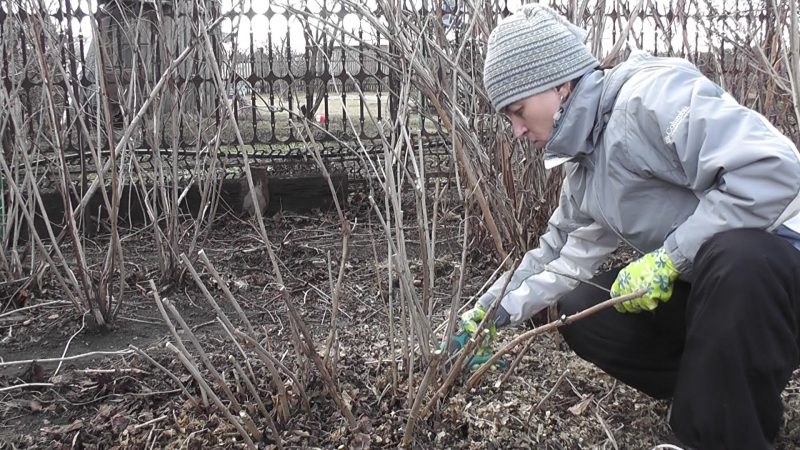
- Of all the species, the first is subject to a hydrangea tree-like procedure with early stages of exit from the stagnation stage. In the species, shoots are shortened to 3 to 4 buds.
- Panicled hydrangea is trimmed more accurately: only ⅓ part of the length of the branches is removed.
- Large-leaved hydrangea practically does not undergo radical pruning: every fourth shoot is slightly shortened, and damaged and diseased are also removed for sanitary purposes.
Irrigation and cultivation
It is also important to observe the irrigation regime in the spring and to carry out loosening of the soil. After a snowy winter, when a hot and arid spring comes, it is recommended to water the hydrangea an additional several times during the season. Watering is carried out at the rate of 3 buckets of water under the bush so that the surface root system does not dry out. After irrigation or rainfall, the near-stem circle loosens to provide an appropriate level of aeration.
How to feed flowers in spring
In order for the bushes or trees to have a lush crown and bloom profusely, you should begin to fertilize in the spring.
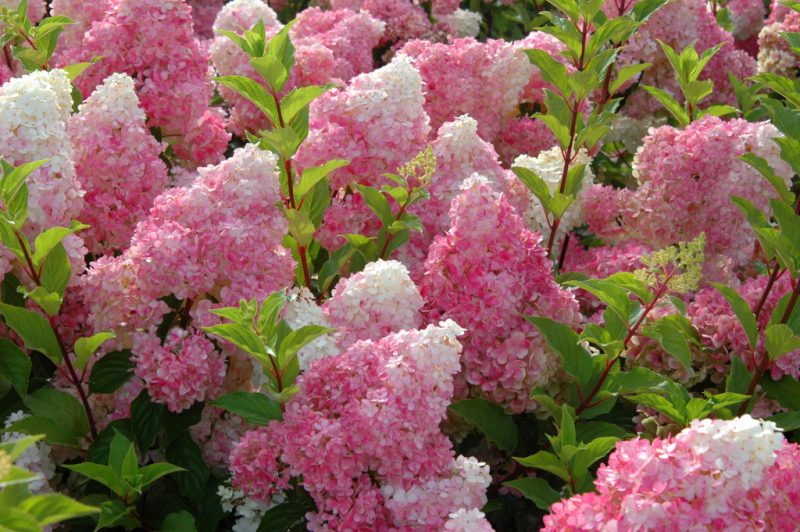
- In early spring, it is worthwhile to add nitrogen-containing mineral fertilizers under the bushes or organic matter containing nitrogen in an accessible form so that the plant can grow a thick green mass.
- In late spring, hydrangea is fed phosphorus and potassium, which contribute to the abundant formation of flowers and their long flowering.
In early spring, as a preventive measure to protect against harmful organisms, it is recommended to treat hydrangea with a Bordeaux mixture made from copper sulfate and slaked lime.
Hydrangea transplantation to another place
Hydrangea is transplanted, as a rule, 10 years after growth in a permanent place. The procedure is carried out in early spring before the awakening of the buds, when a bush dug from the fall is carefully removed to minimize damage to the root system.
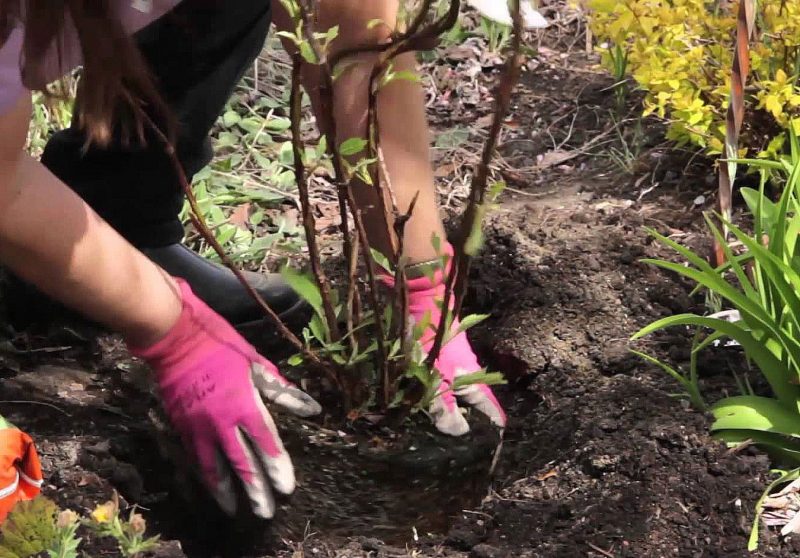
Plant hydrangea in a new place should be with an old earthen lump and into a pre-prepared hole with a drainage layer. After planting, the shoots are shortened by at least ⅓, depending on the species, so that the nutrients are used to the maximum to restore the roots.
How to propagate a plant
The most popular methods of reproduction, which are carried out in the spring, are cuttings and division of the bush.
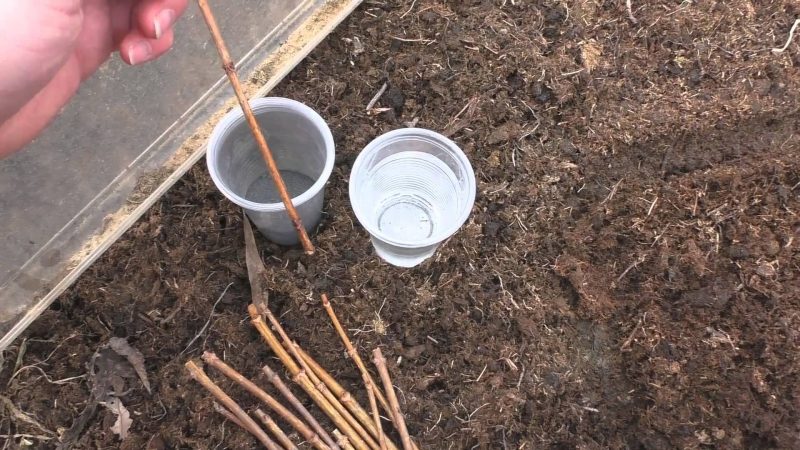
- After spring pruning, cut shoots remain, from which cuttings are prepared with two internodes and the same number of slices - oblique from below and straight from above.
- Between the lower cut and the kidneys should remain 2 - 3 cm.
- Rooted cuttings, buried 3 cm deep in a substrate of peat and sand, under the frame of the film, which allows you to create greenhouse conditions.
- When new shoots begin to appear on the cuttings, seedlings are planted in a permanent place in the open ground, so that before the fall new plants have time to grow stronger and survive the winter without compromising on health and decorative qualities.
Transplantation in early spring can be accompanied by propagation of the culture by dividing the rhizome according to the following scheme:
- The bush is carefully removed from the ground.
- Rhizome is cleared of soil residues and carefully inspected.
- If there are signs of the disease, the affected roots are removed so as not to infect the fresh soil with the infection. Healthy ones are treated with a fungicide solution according to the manufacturer's instructions indicated on the package.
- With the help of a sharp shovel, the bush is divided into several parts so that 3 buds remain on each divide.
- Injured areas are sprinkled with an antiseptic in the form of charcoal or activated carbon.
- New specimens are planted in prepared landing pits, where they are sprinkled with nutrient soil, which is compacted and watered.
- After the completion of the main procedure, the shoots are trimmed.
What problems can flower growers face?
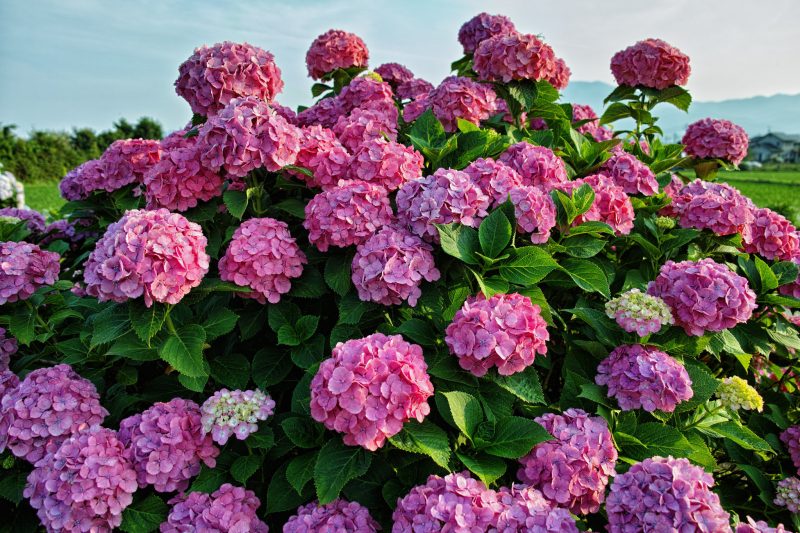
Among the most common problems that arise when growing garden hydrangea are the following:
- The leaves turn black, dry and fall. The reason for this problem lies in the lack of moisture, which the surface hydrangea root system cannot get from deep reserves, therefore it needs systematic watering in the absence of natural precipitation.
- The bush does not grow. If all care activities are carried out. then the poor development of hydrangea may be due to the wrong choice of soil, which should not contain lime.
- Hydrangea suffered from frost. In the event of poor shelter or early removal of protective material, shoots affected by frost will be cut off, and hydrangea will restore its green mass in spring and summer.
- Hydrangea does not bloom. The absence of flowers may result from an overabundance of nitrogen, freezing, improper pruning, or an age threshold.
Thus, competent spring care for tender hydrangea with beautiful inflorescences and a lush crown is the key to the future lush and long flowering.












